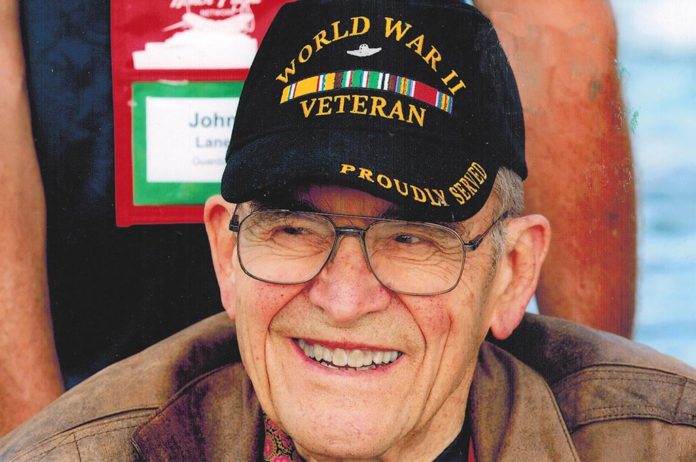
If you ever find yourself stranded in Antarctica or on the Sahara Desert, you would want Frank Heyl stranded right there beside you. The world-renowned survival expert has taught thousands of students the art of survival over the decades, and he is not done.
Heyl, 96, most recently taught a required Oregon Fish & Wildlife wilderness survival class Feb. 15 to a group of young people getting their hunting licenses.
Heyl joined the Armed Forces in 1943 and spent a total of 40 years in the Army Air Force, the Air Force Reserve and the Army National Guard. During his tenure in the military, Heyl flew many medical evacuation and search-and-rescue missions while also developing survival training techniques and designing survival equipment.
After serving in World War II and the Korean War, Heyl was assigned to a reserve squadron at the Portland Air National Guard Base and was teaching in Portland Public Schools when in 1970 he was assigned to be the combat aviation survival training officer and safety training officer “because no one else wanted to do it,” he said.
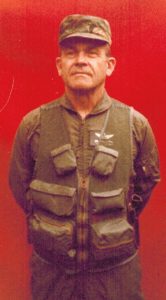
Heyl, who attained the rank of lieutenant colonel, underwent training with the Royal Canadian Air Force and in France and England, among other places. In 1970 Heyl became the 6th Army Survival School’s principal instructor, and for 23 years he was the principal instructor and director for training in both military and contract survival schools.
In 1975 Heyl was appointed chairman of the Oregon Search and Rescue Council, and in that position he assisted in writing the state’s search-and-rescue training standards.
When the 800-mile Alaska Pipeline was being constructed from March 1975 to May 1977, Heyl became the project’s cold weather survival consultant and worked with manufacturers to design specifications for protective clothing and equipment.
“During the first year of construction there were 242 cold-weather injuries, and the second year there were 42, mostly from accidents after drinking,” Heyl said. “As a consultant, I collaborated with the American Petroleum Institute in rewriting and editing a pipeline safety manual, ‘Staying Alive in the Arctic.’ It became the standard for cold weather survival training in Alaska and was later used in the Soviet Union.”
In 1979 Heyl set up the 6th Army Aircrew Survival Mobile Training School’s mobile training team that traveled to bases around the country. “I rounded up most of my military teachers to go teach, and we trained hundreds of instructors,” Heyl said.
In between military tours, Heyl was the director of outdoor education for the Oregon Museum of Science and Industry and developed a survival training program for young people and their parents.
“In 1983, after 40 years in the military, a doctor said my eyes were bad, and I couldn’t fly anymore, so I retired from the Army,” said Heyl, but he didn’t retire from teaching survival tactics.
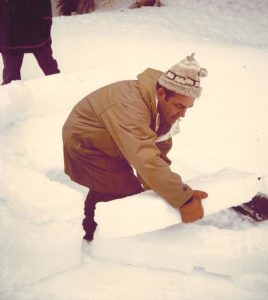
Naturally, he loves talking about all aspects of survival and closely follows successful and unsuccessful survival stories in the news.
“There is so much drama in real life,” he said. “Often when people are ‘lost,’ they are really disoriented geographically but never really lost. But when you are lost, you should stay put. Women tend to do much better at the job of staying alive. The youngest person we ever rescued was a 4 ½-month old baby girl who was only suffering from diaper rash, and the oldest was a 78-year-old woman in the Wallowas.”
As Heyl knows all too well, when you are dealing with the outdoor elements, things don’t always go as planned. In 1986 Heyl and his staff of six instructors led a group of 34 Army National Guard helicopter pilots and crew chiefs from across the country in a winter survival class that was partially based at a site about 20 miles east of Mount Hood. Everyone survived, but one participant got minor frostbite, and another became ill and was later diagnosed with pneumonia.
And some of his exploits were not so mundane. On a trip to the Canadian Arctic, Heyl learned that two polar bears harassing the area were going to be euthanized. He called the director of the Washington Park Zoo (now the Oregon Zoo), which had just lost its polar bear, and asked if he wanted two free bears. The Canadian Royal Air Force flew them to Vancouver, B.C., where a Western Airlines plane picked them up for the flight to Portland.
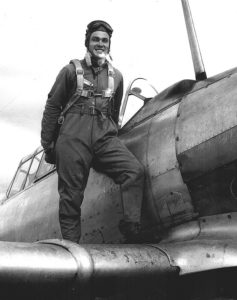
Heyl also taught survival techniques to author Jean Auel which she used when writing “Clan of the Cave Bear.”
Naturally, Heyl can talk non-stop about survival tips that include bringing along jellybeans (they taste great and have a long shelf life) and condoms, which take up no space and can be used to carry water.
Heyl has always loved the military, with his dad and uncle both serving in the Navy, and he loved wearing uniforms, starting when he became a Boy Scout. He also loved flying, taking his first airplane ride with his pilot uncle when he was 11 years old.
“I knew I had to fly,” said the White Salmon, Wash., native who now lives in Tigard. “I took flying lessons, and at age 18 I tried to join the Navy, but I flunked the physical. They told me to go across the street to the Army because they would take me.
“Right after graduating from flight school, I flew a B-25 on submarine patrol in the Gulf of Mexico. They had more fire power than the B-17s. The U.S. was preparing for the invasion of Japan. I had orders to go to Okinawa, but after two missions, the war was over. In Okinawa, I was assigned to supply and only flew once a month. Back home, I got a degree in education and got married, and then I got a letter from the President to serve in the Korean War.”
Heyl became a full-time pilot, flying troop carriers and medical evacuations and racking up 49 missions.
“When you got to 50 missions, you could go home,” he said. “After 49 missions, I was told that if I signed up for another year in Japan, my wife could come and our car would be sent there for free. My wife had not been out of Multnomah County but was ready to go. I was a staff pilot, flying dignitaries and cargo all different places. Our first baby was born in Japan.”
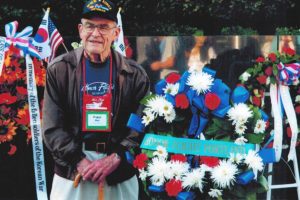
In addition to all the classroom and hands-on training he has conducted, Heyl is an accomplished author. He and Richard O. Woodfin Jr. co-wrote “Why Some Survive: Common Threads of Survival from Accounts of Survival and Tragedy in the Outdoors.”
In the book, the authors list the 10 “common threads” that survivors have in common. These include having the correct knowledge and right equipment, not taking impulsive trips or shortcuts, not telling someone where you are going and when you expect to be back, not paying attention to the route traveled to be able to backtrack, and not letting ego, testosterone or attitude sway you to do something dangerous.
Also, there is the failure to not have the right clothing for the planned activity, to not stay in one place, to not allow enough time to prepare to spend the night, to not prepare a signal for rescuers and to not have the will to survive.
Heyl has co-authored survival manuals and training devices that have been used by survival schools for more than 40 years. They include “Edible and Poisonous Plants of the Eastern United States,” “Edible and Poisonous Plants of the Western United States,” “Survival Playing Cards” and “Survival–A Way of Life.”
He said the motto he lives by is “Plan for the best but prepare for the worst.”





















